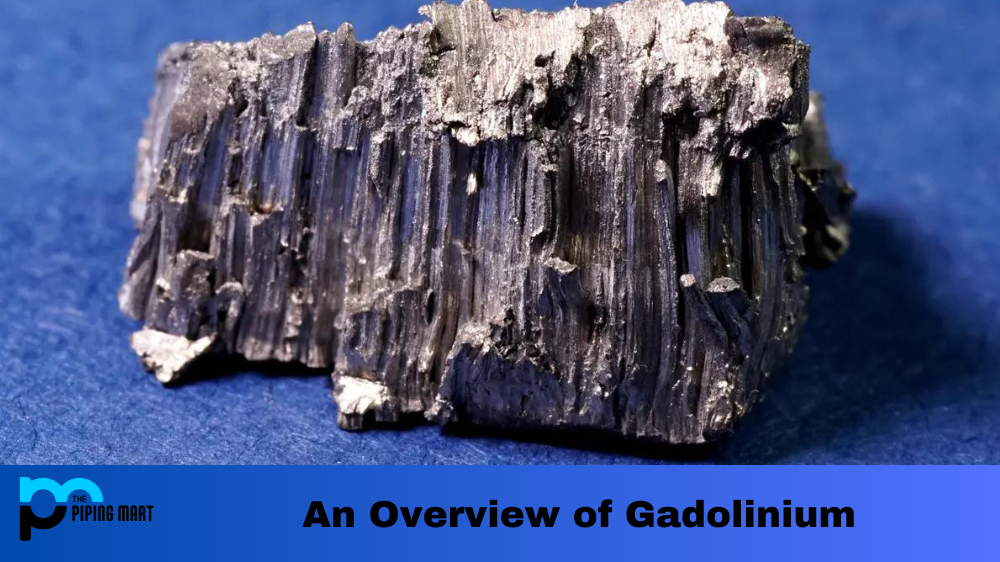Gadolinium is a rare earth element most commonly used in MRI imaging agents. It has been used for decades to improve the accuracy and resolution of medical imaging, but recent research has revealed that gadolinium can be hazardous for some patients. Despite this, it remains an important tool in diagnosing various diseases. Let’s take a look at what gadolinium is and why it’s so important in modern medical diagnostics.
What Is Gadolinium?
Gadolinium is a rare earth metal found in nature. Its symbol on the periodic table of elements is “Gd,” with an atomic number of 64. 19th-century Swedish chemist Carl Gustaf Mosander first discovered the element in 1880. It has since become widely used as an MRI contrast agent due to its ability to absorb magnetic energy and create bright images on MRI scans.
Gadolinium Properties
Gadolinium has a number of unique properties that make it useful in a variety of applications. It is highly resistant to corrosion and oxidation, making it ideal for use in corrosive environments. It also has a high melting point, making it suitable for use in high–temperature applications. In addition, gadolinium is highly magnetic, making it useful in the production of magnets and other magnetic materials. Overall, gadolinium is a versatile material with a number of unique properties that make it useful in a variety of applications. Its corrosion resistance, high melting point, and magnetic properties make it ideal for use in a variety of industries.
Benefits of Gadolinium
Gadolinium is often used during MRI scans because it helps radiologists detect certain diseases or abnormalities more effectively than other scanning methods can. For example, when injected into the body prior to the scan, gadolinium can make blood vessels appear brighter on the image, allowing radiologists to identify any blockages or tumors present much more easily than with other types of tests. Additionally, gadolinium helps diagnose multiple sclerosis (MS) and other neurological disorders like Alzheimer’s disease and Parkinson’s disease because it makes brain tissue appear brighter on scans. In short, gadolinium helps radiologists see what would otherwise be invisible or hard to detect with other forms of medical imaging.
Gadolinium Uses
Gadolinium is a rare earth metal that is used in a variety of applications. It is often used as an alloying agent in steel and other metals, as well as in the production of magnets and other magnetic materials. Gadolinium is also used in medical imaging, as it has a strong magnetic resonance that can be used to create detailed images of the body. In addition, gadolinium is used in nuclear reactors as a neutron absorber, helping to control the rate of fission.
Potential Risks Associated With Gadolinium
Although gadolinium is beneficial for medical imaging purposes, recent research has revealed that it can be toxic to some patients if left in their bodies for too long after an MRI scan. This is because gadolinium does not always get flushed out through normal bodily processes. Instead, it can accumulate in soft tissues like the brain and lymph nodes over time which can cause adverse health effects such as nausea, vomiting, headaches, or even kidney failure if left unchecked for too long. Because of this risk factor, doctors typically only use gadolinium during MRI scans when absolutely necessary and will take measures to ensure that any excess amounts are removed from the patient’s body afterward.
Conclusion:
Gadolinium is a rare earth metal most commonly used as an MRI contrast agent due to its ability to absorb magnetic energy and create bright images on scans which help radiologists detect diseases or abnormalities more effectively than with other scanning methods. While there are risks associated with using gadolinium – such as potential toxicity if left in the body for too long – these risks are usually minimal when doctors take proper safety precautions before administering a scan using this element. All things considered, gadolinium remains an incredibly important tool for modern medical diagnostics today despite its potential drawbacks and should not be overlooked when considering treatment options available for various conditions or illnesses.

Pipingmart is a B2B portal that specializes in metal, industrial and piping items. Additionally, we share the latest information and information about materials, products and various types of grades to assist businesses that are involved in this business.




